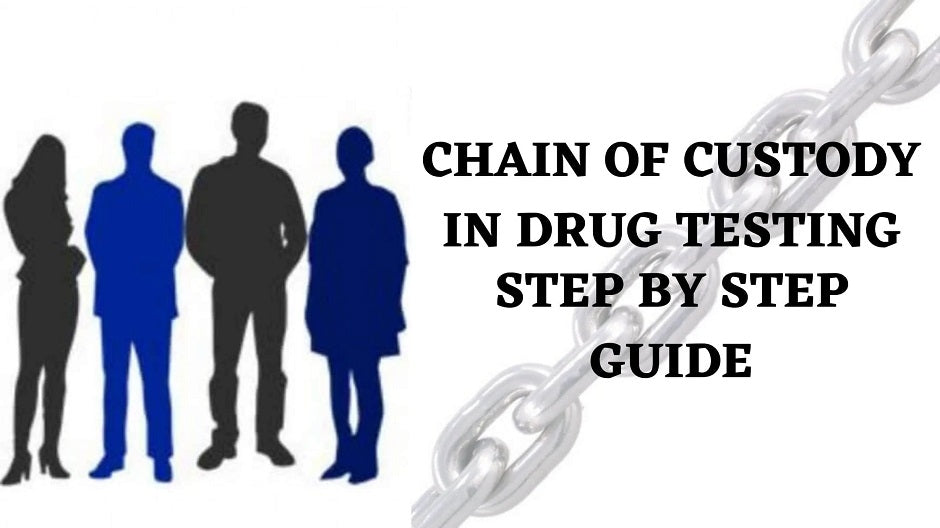A drug test is conducted to detect the absence or presence of illicit drugs and the abuse of drugs in general. It is often used for employment or legal purposes. Many employers use a particular testing procedure known as “chain-of-custody” or ‘CoC’ for their workplace drug testing programs. A chain-of-custody ensures the accuracy and integrity of a specimen tested in accordance with the Mandatory Guidelines for Federal Drug Testing Programs.
Table Of Contents:
- What is a Chain of Custody?
- Chain of Custody Drug Testing Process
- Chain of custody in medical and legal drug testing
- The takeaway
A chain of custody refers to a paper trail showing the testing and analysis of a urine specimen. The paper trail shows the seizure, custody, control, transfer, analysis, and disposition of the specimen from the time it is collected until the time of review and reporting of the result. Keep reading to learn more about chain-of-custody, the drug testing process, and its application in medical and legal testing.
What is a Chain of Custody?
A chain-of-custody paper trail tracks and identifies the person in possession of the evidence at different times during the drug testing process.
New information is added to the chain-of-custody form, also known as the custody-and-control form (CCF), each time the test specimen is transferred from one person to another. Correspondingly, the CCF is signed by the person who collects the specimen.
Chain of custody drug screening offers higher specimen validity than a regular clinical drug screening, thereby ensuring a safer and better workplace environment. It may also hold up as evidence in a legal trial much better than a clinical drug test, especially in circumstances where the test result could be challenged.
Chain of Custody Drug Testing Process
The collection facility initiates the documentation that accompanies the specimen to the laboratory. The chain of custody requires all the stakeholders to properly document the steps and validate their work in the testing process. This reduces any potential for tampering and adulteration of the sample tested.
The donor provides the sample at a collection site that offers a chain-of-custody drug testing. You will also be required to provide valid identification proof (driver's license, passport, etc.) to confirm your identity. Both the donor and the specimen collector complete the custody and control form (CCF) declaring that the candidate is indeed who they claim to be and that the sample has been collected in accordance with the specified collection process.
The sample is then sealed into a bag to prevent any tampering and sent to a testing lab. The chain of custody paper trail also maintains how and when the specimen was transported. After testing, the results are sent along with the completed CCF to the MRO (Medical review officer). The MRO interviews the donor and sends the verified result to the respective employer. The collection process takes about half an hour and typically 1-2 days for the result of the chain-of-custody to be processed.
The chain-of-custody process offers:
- Clear and unique identification of the test subject
- Clear and unique labeling of the specimen
- Identification of all persons handling the specimen and with a legible signature
- A detailed record of events with the steps and action taken
- Sealed specimen which protects the specimen from any tampering
Many labs offer an electronic Custody and Control Form (eCCF) or electronic Chain of Custody (eCOC), which is the digital version of the CCF to ensure proper handling of the drug test specimen. eCOC labs are authorized by National Laboratory Certified Program (NLCP) to perform workplace drug testing. They tend to have fewer data-entry and legibility issues, including less paperwork, and provide overall efficiency to the chain-of-custody process.
Chain of custody in medical and legal drug testing
A medical drug test is performed to assist your physician or healthcare provider in detecting the presence of illicit substances. It is conducted when a patient is suspected of abusing illicit or controlled substances. A law enforcement agency or employer cannot use the result of a positive drug test against the patient or employee for any punitive action, and the information is kept confidential. Here, a chain-of-custody is not required.
Medical drug testing involving urine screening is performed using immunoassay tests to conduct initial drug screening. GC/MS (Gas chromatography/ mass spectrometry) or LC/MS/MS (liquid chromatography-tandem mass spectrometry) to confirm positive drug test results is rarely conducted unless the ordering clinician requests it.
In contrast, GC/MS or LC/MS/MS method is mandatory to confirm the initial positive immunoassay result. Likewise, the designated MRO may send the result to the employer that ordered the test or presented in court as evidence against you in case of a legal trial.
The takeaway
A chain-of-custody refers to a paper trail to ensure the accuracy and integrity of a specimen tested. It is detailed documentation and description of the five-step process of seizure, custody, control, transfer, analysis, and disposition of the specimen tested. A chain-of-custody aids workplace drug testing programs in building a safer workplace environment by preventing false positives.
A designated MRO is responsible for reviewing and evaluating the result of the drug test. Incomplete submission of the information, refusal to provide a specimen, substitution, or adulteration of the specimen may result in the delay or denial of employment or other disciplinary action. Additionally, tampering or mishandling the CCF is subjected to investigation and penalization under the law.

